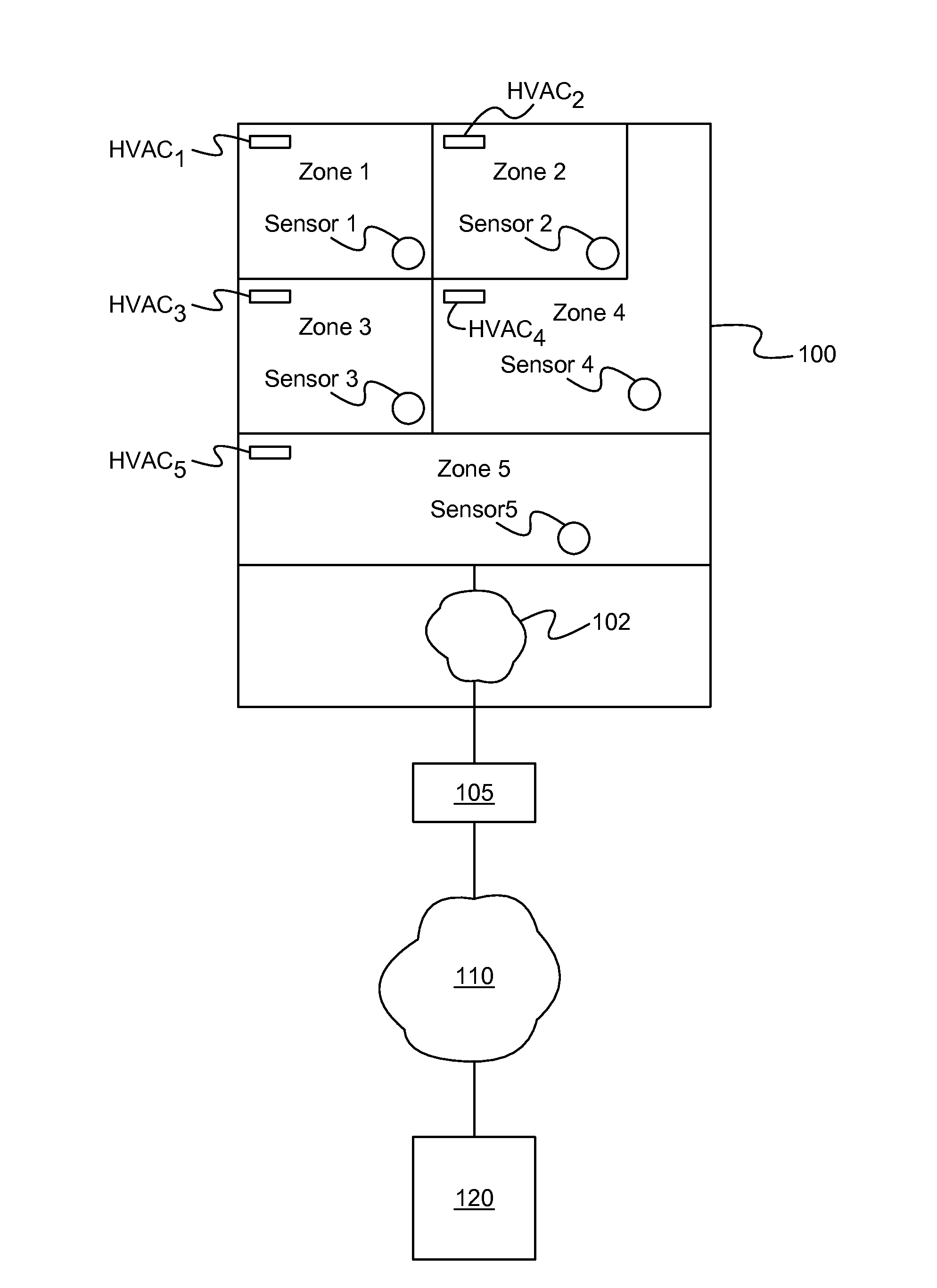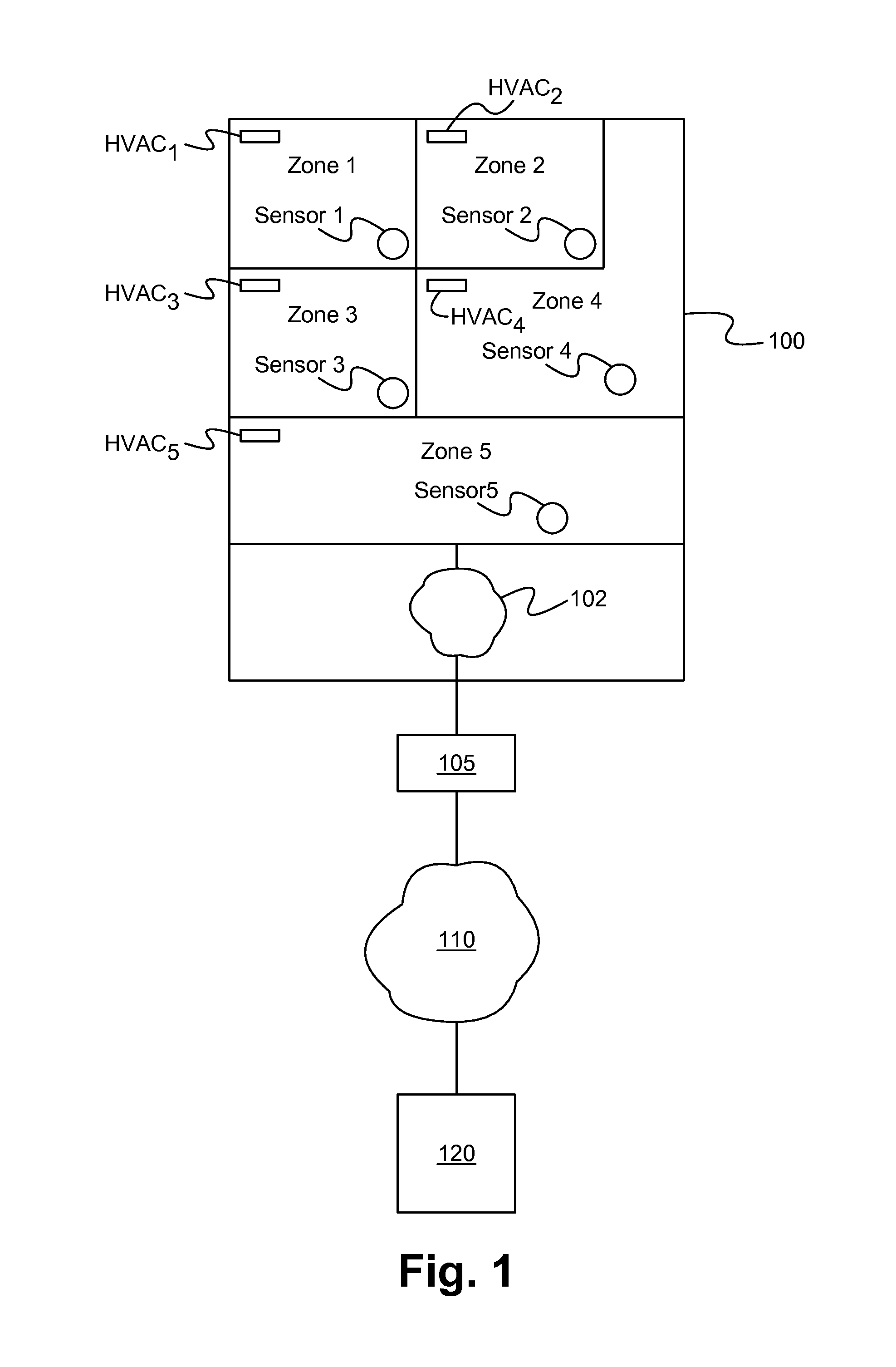Systems for and methods of modeling, step-testing, and adaptively controlling in-situ building components
a technology for building components and systems, applied in the field of controllable building environments, can solve the problems of inefficiency, time-consuming and laborious, and difficult to model, and achieve the effects of reducing labor intensity, reducing labor intensity, and reducing labor intensity
- Summary
- Abstract
- Description
- Claims
- Application Information
AI Technical Summary
Benefits of technology
Problems solved by technology
Method used
Image
Examples
Embodiment Construction
[0036]FIG. 1 shows a building 100 with multiple zones 1-5, each with its own thermal environment, and building automation system (also referred to as building management system “BMS”) 105, coupled over the Internet 110 to a control platform 120, used to model performance in the thermal environments, according to one embodiment of the invention. Each of the zones 1-5 has one or more heating, ventilation, and air-conditioning (HVAC1-5) components for controlling the temperature, humidity, air flow, air flow rate, rate, or other environmental state within the corresponding zone 1-5, and a corresponding sensor 1-5 for measuring the environmental state in that zone. As discussed in more detail below, the modeling for each HVACi component (i=1 to 5) is performed using a power consumption reading for a group of zones in the entire building 100, rather than a power reading taken for each HVACi component. Advantageously, this modeling process does not require a power consumption meter for ea...
PUM
 Login to View More
Login to View More Abstract
Description
Claims
Application Information
 Login to View More
Login to View More - R&D
- Intellectual Property
- Life Sciences
- Materials
- Tech Scout
- Unparalleled Data Quality
- Higher Quality Content
- 60% Fewer Hallucinations
Browse by: Latest US Patents, China's latest patents, Technical Efficacy Thesaurus, Application Domain, Technology Topic, Popular Technical Reports.
© 2025 PatSnap. All rights reserved.Legal|Privacy policy|Modern Slavery Act Transparency Statement|Sitemap|About US| Contact US: help@patsnap.com



